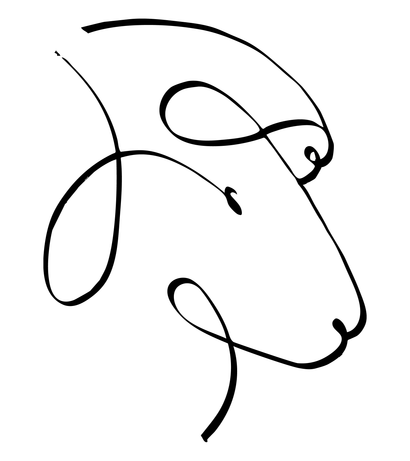Free shipping on all domestic orders over $150
Free shipping on all domestic orders over $150
Shop
Add description, images, menus and links to your mega menu
A column with no settings can be used as a spacer
Link to your collections, sales and even external links
Add up to five columns
Add description, images, menus and links to your mega menu
A column with no settings can be used as a spacer
Link to your collections, sales and even external links
Add up to five columns

Substituting yarns in knitting
September 12, 2022 6 min read
How do I substitute yarns in knitting projects?
To substitute yarns, first look at recommended gauge
The first step is to look at the gauge recommended in the pattern. (Need a primer on gauge? check out this post) The pattern will say, for example, that the garment has a gauge of 20 stitches per 4 inches. You will want to start looking for a yarn that knits at the same gauge. That information is on the ball band and is typically shown in a small chart diagram. The ball band might say 21 stitches per 4 inches, or 19 stitches per 4 inches. Either would probably be fine, because yarn has a range of gauges in which it would be happy. As always, you will really need to swatch the yarn you're considering substituting and see if you like the fabric at the gauge recommended in your pattern.
How do I figure out many skeins to buy?
This question is one we get in the shop many times a day. Let’s say you have a pattern you want to knit, but you've chosen a different yarn. How do you know how much of the substitute yarn to purchase?
This is a simple math question that I’ll break up into a few steps.
- Choose the size you want to knit
- Look at how many skeins of the recommended yarn are required for that size
- Find out the number of yards per skein of the recommended yarn (if yardage per skein is not given in the pattern, look on Ravelry)
- Multiply the number of skeins required by the yardage per skein of that yarn to get total yardage requirement for your size (sometimes designers give you the yardage requirements directly, in which case you can skip steps 2 and 3)
- Find the number of yards per skein in the yarn you selected (Again, Ravelry is a great resource for yardage information)
- Divide the total yardage requirement by the number of yards per skein in the yarn you selected.
- Round up any fraction of a skein to the next whole number..
Here's an example: Let’s say you’re making the Aretha sweater designed in Alpaca Classic but you’re picturing it in Felted Tweed.
- You decide on the size to fit 40’-42” bust
- That size takes 17 skeins of Alpaca Classic
- You see on the yarn palette page (or on Ravelry that Alpaca Classic has 131 yards per skein
-
Calculate total yardage needed by multiplying 17 skeins by 131 yards/skein
(17x131 = 2227) - Look at the ball band (or on Ravelry) and see that Felted Tweed has 191 yards per skein.
- Divide total yardage (2227) by the substitute yarn yards/skein (191) 2227/191=11.6
- Round up the fraction - 11.6 rounds up to 12. Purchase 12 skeins.
That’s pretty straightforward, right? There is even a calculator you can use (I hope)
This process works perfectly every time to figure out how many skeins you need to meet your yardage requirements, but
There is a whole lot more to substituting yarns than just yardage and yarn gauge.
You’ll want to consider the weight of the yarn and the gauge of the pattern.
You want to substitute a yarn that knits at the gauge of your pattern. If your pattern calls for a gauge of 20 stitches per 4 inches, you’ll need to find a substitute yarn that knits at that gauge.
You’ll also want to consider the weight of the yarn used in the original pattern.
It might be that the designer has a particular gauge in the pattern but is using a much lighter or heavier yarn to create a particular type of fabric. Very often fingering weight yarn is knit at a gauge of 22-23 stitches per 4 inches to create a light and drapey fabric. I’ve put together some guidelines to help you avoid some of the pitfalls and make better substitutions.
Pay attention to the per yard weight of the yarn. Not just the gauge
One of the biggest mistakes that I see happens in patterns that call for a yarn that knits at a bulky gauge. What might that look like?
Wooladdicts Trust – Trust is a super bulky boucle - knits at a gauge of 11 stitches/4 inches.
Simple sweater Sacred Sage. https://www.ravelry.com/patterns/library/sacred-sage
S/M takes 820 yards Trust has 87 yards per skein, so that’s 10 skeins
But maybe we don’t like Trust. Or it’s not available. So we check the gauge and see, 11 stitches per 4 inches in stockinette.
Let’s find another super bulky yarn at that gauge.
Maybe you just love this super cute yarn from Pancake and Lulu. Hand dyed and beautiful. https://www.ravelry.com/yarns/library/pancake-and-lulu-single-bulky
Checking the ball band, you see that it has a gauge of 11 stitches over 4’ SCORE!
So you check the yardage. 82 yards - you’ll need 10 skeins - same as Trust! Woohoo. And you gather up an armful of it.
Same same, right? The trust is 87 yards in 50 grams and the Lulu is 87 yards in 100 grams
Wait.
Each 87 yard skein of Trust weighs half as much as each 87 yard skein of Lulu.
The sweater in Trust will weigh 471 grams or just over a pound, while the same sweater in Lulu will weigh 1000 grams, or 2.2 pounds. More than twice as much. The Lulu will work, certainly. You just want to be sure you’re happy with the physical weight of the sweater.
So, if you’re looking for a better substitution for the Trust, you’ll want to look for yarns that with a bulky knitting gauge, but relatively light physical weight. Here’s are a few to consider:
Note the original yarn’s gauge
A lot of patterns push the gauge on the yarns they use. Which means they knit it at a much looser gauge than the ball band calls for.
For instance, look at the patterns Free and Stroll by Kim Hargreaves.
These patterns call for a dk weight plus a lace weight mohair to be held together and knit at a bulky gauge. The stitches are loose and open and create the thin and lightweight fabric the designer wanted. If you were to jump in and choose a yarn that knits at 13 stitches per 4”, you’d get quite a different fabric, and a completely different garment.
When you substitute just based on gauge, you don’t always end up with the look that’s shown in the pattern photo.
Pay attention to the original yarn’s elasticity
Some designs really need the yarn to be bouncy and elastic, while other designs need a yarn that drapes easily. Yarns that are bouncy and elastic hold their shape and maintain the structure of the garment. Yarns that are inelastic and not bouncy tend to relax and stretch out, creating more drape in the fabric.
Ginni once made a shell using a beautiful hand-dyed seasilk blend yarn. The garment stretched, but Ginni’s tall, so she was okay with it. But then it stretched more and more, and even more, until the neckline was too low, and the top was completely unwearable. She ended up ripping it out and making a shawl with the yarn because it doesn’t matter if a shawl stretches out - in fact, you often want to stretch it out. But, lesson learned.
On the other hand, you might want to take advantage of a yarn’s stretch and drape to create a fabric that does just what you want. For example, this top uses a fiber without a lot of elasticity to create that neckline that drapes so beautifully.
Joji Locatelli mentions this specifically in her Staple Linen Top, noting that she knits it shorter than desired since she knows the yarn will stretch to the length she actually wants.
So, pay attention to how much elasticity there is in the yarn used and how it will behave once knit and washed and worn.
If you have a pattern you’re trying to make, and you want help substituting yarn, give us a shout. We can recommend one of our gorgeous yarns that will work perfectly and turn out just as you expect.
I did a YouTube Live on exactly this topic, which you can see here.

